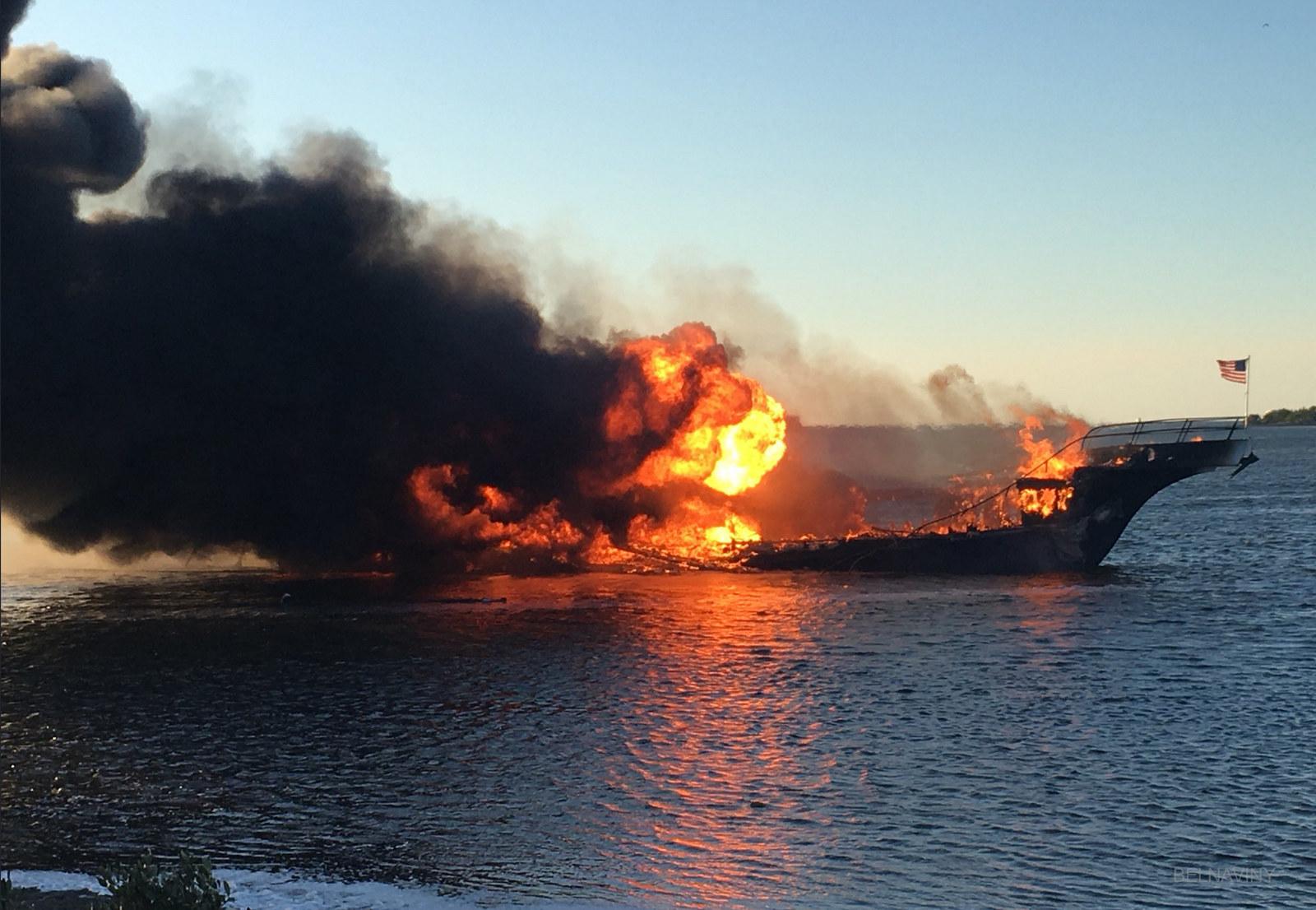What you need to know in case of a fire in the cargo space of a ship
 According to P&I Clubs statistics, fires in cargo spaces occur much less frequently than fires in engine rooms or fires of electrical units. However, no matter where a fire occurs on the ship, it is a serious problem, since fire can spread quickly and it is very difficult to localize, as a result, everything often ends up with the crew having to evacuate the ship urgently," the Russian Professional Union of Seafarers notes.
According to P&I Clubs statistics, fires in cargo spaces occur much less frequently than fires in engine rooms or fires of electrical units. However, no matter where a fire occurs on the ship, it is a serious problem, since fire can spread quickly and it is very difficult to localize, as a result, everything often ends up with the crew having to evacuate the ship urgently," the Russian Professional Union of Seafarers notes.
So, in 2021, a fire on board the container ship X-Press Pearl led to the complete destruction of the vessel and cargo, which once again reminded the shipping industry that preventing cargo fires is a top priority for the shipping industry.
According to the latest Allianz Safety and Shipping Review report, more than 70 fires have been reported on container ships alone over the past five years. These fires often occur in containers and may be the result of providing incomplete or unreliable information about dangerous goods such as chemicals and batteries.
"About 5% of the containers loaded on board are undeclared dangerous goods. They may be improperly packed and placed on board, which may lead to a fire and/or make it difficult to detect and extinguish the fire. The more containers on board, the higher the probability that at least one of them can catch fire and cause a fire, and the more difficult it is to localize and extinguish it," Allianz notes.
Lessons learned from recent incidents
The risks of fire on board cargo ships are numerous and varied; for example, a fire in the cargo hold may occur due to a short circuit in the vehicle that carries the ship, or due to a malfunction in the electrical wiring of the lighting of the hold itself. That is why it is extremely important to have appropriate procedures in place to ensure that the lighting systems of the cargo hold are switched off and, if necessary, isolated at the appropriate time to eliminate the risk of fire after the start of the loading operation.
In addition, breakdowns and seawater penetration into the vessel can affect stability, and open decks contribute to the rapid spread of fire. In addition, busy schedules and a short turnaround time of the vessel in port are the factors due to which the crew may not have time to carry out all the necessary checks before the ship departs to reduce the risk of fires or to control the displacement of vehicles loaded on board. In any case, it is extremely important to record the implementation of all security procedures and implement systems to verify their implementation.
In a special study of the Swedish Club insurance club devoted to this problem, an explosion case was analyzed on board, which occurred due to non-compliance with safety rules during fumigation. The Club draws attention to the need to strictly follow the instructions for the use of fumigant. Since the holds are not ventilated for some time after fumigation, there may be a risk of excessive condensation of moisture inside, and in some cases even fogging or droplet formation. This can lead to damage to the cargo, as well as increase the risks of fire and explosion. Therefore, before fumigation, which is often carried out by specialized companies, it is necessary to take due account of weather conditions and the condition of the cargo, in particular, the moisture content in the cargo.
Analyzing another incident, the Swedish Club focuses on the fact that cargoes containing calcium hypochlorite and other oxidizing solids, which are often used for disinfection of swimming pools and fabric treatment (bleaching or washing), are subject to self-heating and "uncontrolled heating", which lead to rapid self-decomposition and the release of heat and the formation of gases, including oxygen. The consequences of these processes in the hold can be similar to an explosion, and the heat and oxygen released can contribute to the spread of fire.
In one case, a fire broke out due to the fact that several group reflectors were turned on when a load was lying on them, and the load caught fire from exposure to hot lamps. The Swedish Club noted that there was no information on board about how the lighting circuits were connected, and how the reflector system should work, and there were also no records of their use. In many holds on bulk carriers there are stationary group reflectors. Halogen lamps get very hot and can easily ignite combustible goods such as grain, animal feed, wood chips, pulp and paper if they are too close to the light source.
Therefore, the reflectors in the holds must be properly insulated before loading. It is best to do this by removing fuses or other physical links in electrical circuits so that they cannot be turned on even by mistake. On container ships, reflectors should be located in strictly defined places so that neither cargo nor any other combustible substances can heat up and catch fire from the heat they emit. Reflectors on trucks and ferries are usually fluorescent, which is unlikely to ignite the cargo located next to them.
Source: http://www.sur.ru/ru/news/lent/2022-11-22/pozhar_v_gruzovom_prostranstve_sudna_chto_nuzhno_znat_21845/







